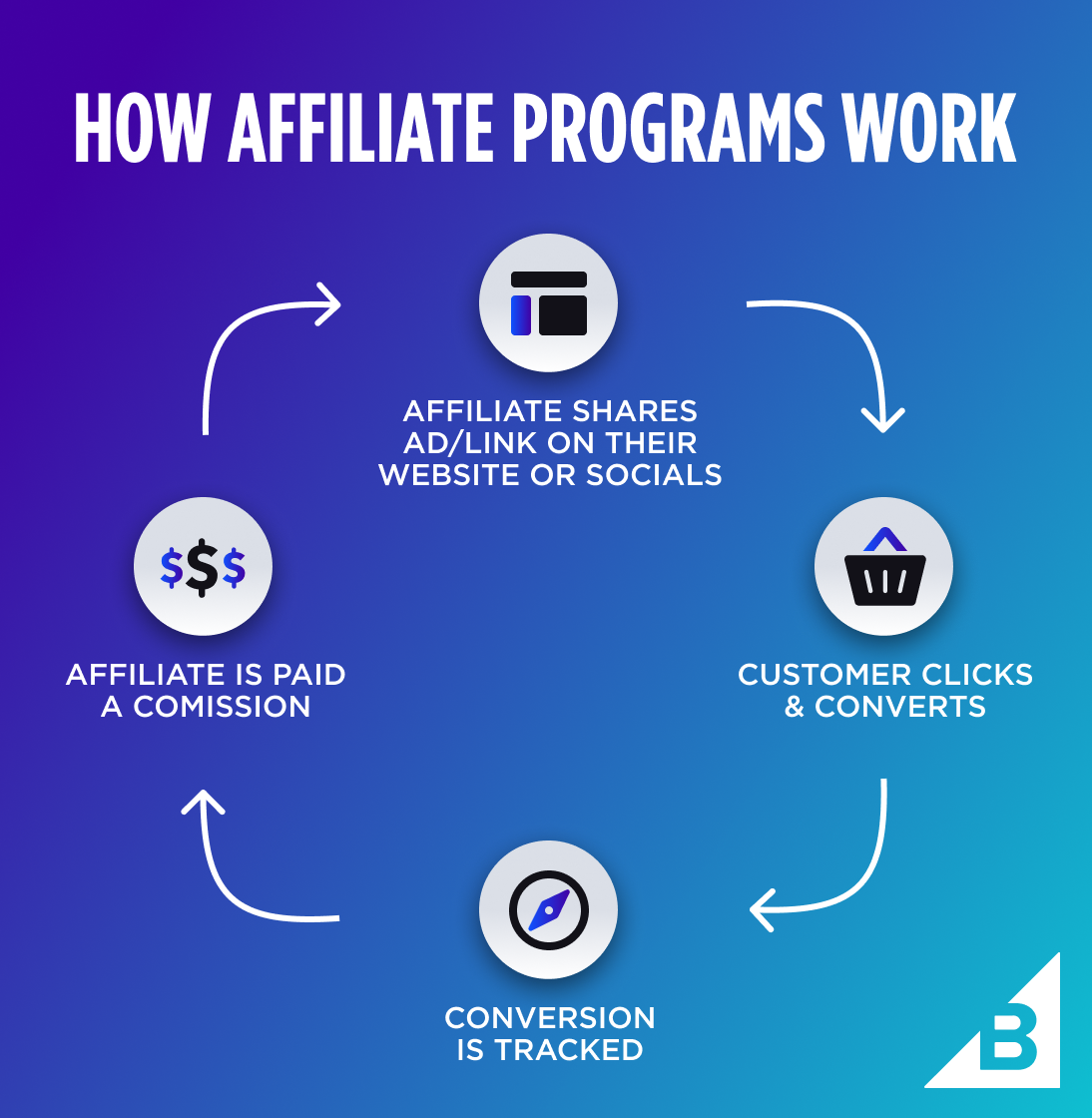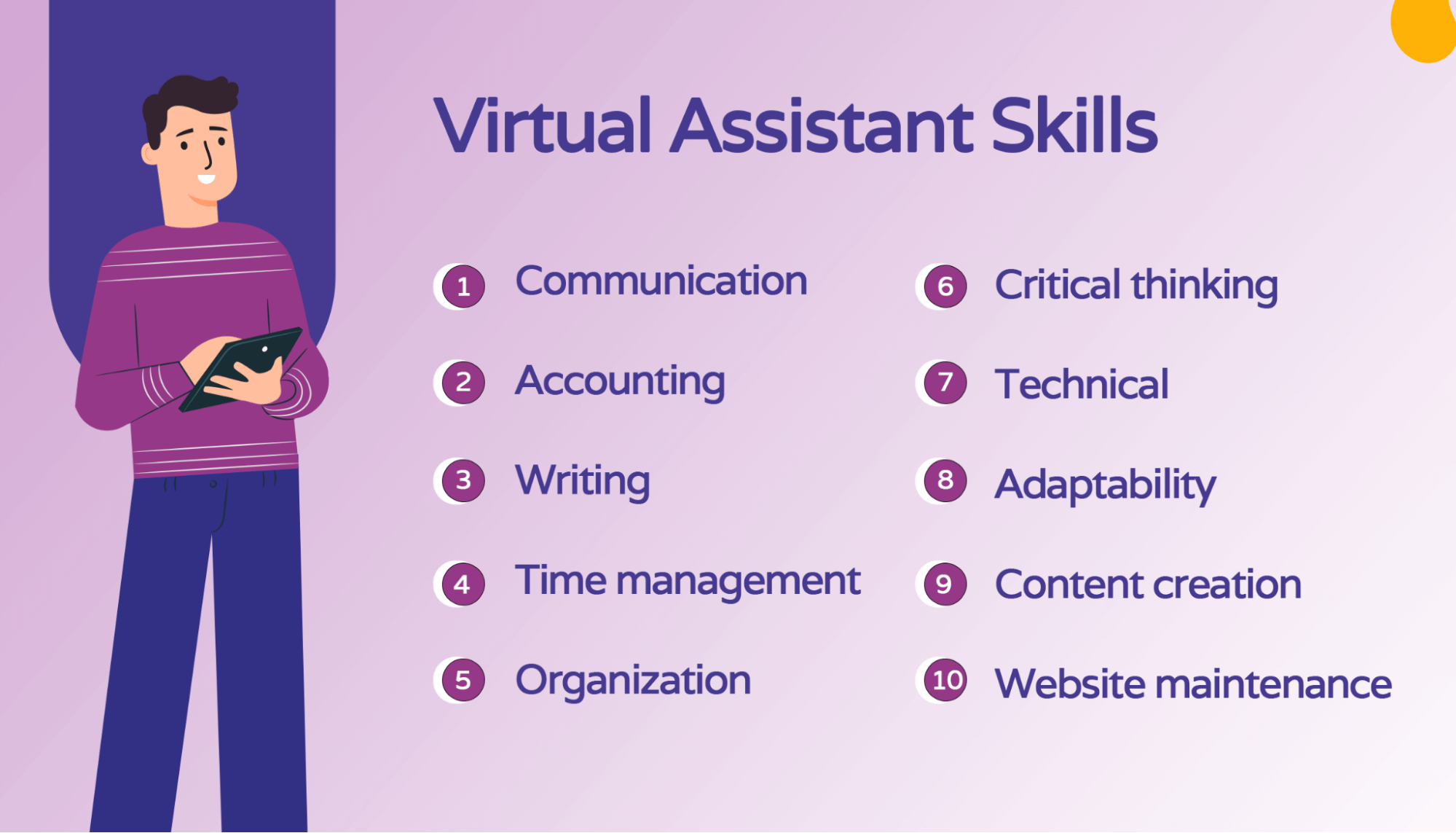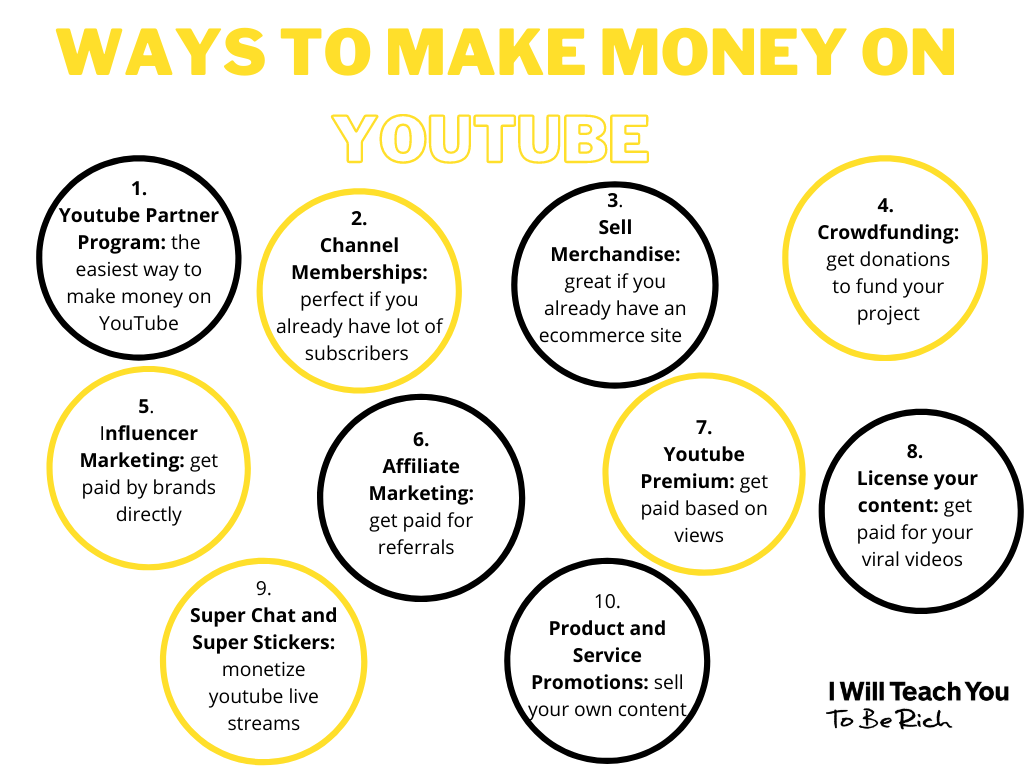Small Digital business Ideas
In this era of digitization when world has now connected through internet there are several small business that can be done digitally and you can earn a good money. In fact there are several people who live in remote and small cities who in spite of having good IT knowledge cannot able to earn sufficiently , even peoples living in big cities due to lot of scope and wide customer base are working digitally at the comfort of there house. This article will explore some business ideas quite popular in digital business domain-
1. Affiliate Marketing
Affiliate marketing is a performance-based marketing strategy where a business rewards one or more affiliates for each visitor or customer brought by the affiliate's marketing efforts. It's a process where an individual or a company promotes another company's products or services and earns a commission for each sale, lead, or click generated through their promotional efforts.
Here's how affiliate marketing typically works:
-
Affiliate Signs Up: An individual or company (the affiliate) signs up for an affiliate program offered by a merchant or advertiser.
-
Promotion: The affiliate promotes the merchant's products or services through various marketing channels, such as websites, blogs, social media, email marketing, or other online platforms.
-
Tracking Links: The affiliate uses unique tracking links provided by the merchant to track the referrals and sales generated through their promotional activities. These links contain special identifiers that allow the merchant to attribute sales or leads back to the specific affiliate.
-
Customer Engagement: When a potential customer clicks on the affiliate's unique tracking link and makes a purchase or completes a desired action (such as signing up for a newsletter or filling out a form), the affiliate earns a commission.
-
Commission Payment: The merchant tracks the sales or leads generated by each affiliate and pays them a commission based on the agreed-upon terms, which may be a percentage of the sale amount or a fixed amount per lead.
Affiliate marketing offers several benefits for both merchants and affiliates:
- Cost-Effective: For merchants, affiliate marketing is a cost-effective way to acquire customers as they only pay for actual sales or leads generated.
- Passive Income: For affiliates, it can be a source of passive income as they earn commissions for sales or leads generated through their promotional efforts.
- Wide Reach: It allows merchants to reach a wider audience through the network of affiliates, potentially increasing sales and brand exposure.
- Performance-Based: Both merchants and affiliates benefit from the performance-based nature of affiliate marketing, as it incentivizes affiliates to drive results.
Overall, affiliate marketing has become a popular and effective strategy for businesses to expand their reach and increase sales, while also providing individuals with an opportunity to earn income through promoting products or services they believe in.
Drop shipping is a retail fulfillment method where a store doesn't keep the products it sells in stock. Instead, when a store sells a product, it purchases the item from a third party and has it shipped directly to the customer. As a result, the merchant never sees or handles the product. Here's how drop-shipping typically works:
-
Customer Places an Order: A customer places an order on the merchant's online store and pays the retail price.
-
Order is Forwarded to the Supplier: The merchant forwards the order and customer details to a third-party supplier, often a wholesaler or manufacturer who offers dropshipping services.
-
Supplier Ships the Product: The supplier then ships the product directly to the customer on behalf of the merchant. The package typically doesn't include any branding or information from the supplier, making it appear as though it came directly from the merchant.
-
Merchant Profits: The merchant profits from the difference between the retail price charged to the customer and the wholesale price paid to the supplier, minus any expenses such as marketing or platform fees.
Drop-shipping offers several advantages for online retailers:
- Low Capital Requirement: Since the merchant doesn't need to purchase inventory upfront, there's lower initial investment compared to traditional retail models.
- No Inventory Management: The merchant doesn't have to deal with inventory storage, management, or fulfillment, which can save time and resources.
- Wider Product Selection: With dropshipping, merchants can offer a wide variety of products without having to stock them, allowing for greater flexibility and scalability.
- Location Independence: Dropshipping can be done from anywhere with an internet connection, making it a flexible business model for entrepreneurs.
However, drop-shipping also has some challenges and considerations:
- Lower Profit Margins: Since the merchant is paying wholesale prices for products, profit margins can be lower compared to traditional retail models where products are purchased at bulk or discounted rates.
- Supplier Dependence: The success of the business relies heavily on the reliability and efficiency of the suppliers. Any issues with product quality, inventory availability, or shipping times can impact customer satisfaction and reputation.
- Competitive Market: Dropshipping has become increasingly popular, leading to greater competition among merchants. Success often requires effective marketing strategies and differentiation.
Overall, Dropshipping can be a viable business model for entrepreneurs looking to start an online retail business with minimal upfront investment and inventory management responsibilities. Success in Drop-shipping often depends on finding reliable suppliers, selecting profitable niches, and implementing effective marketing and customer service strategies.
-
Administrative Support: Virtual Assistants often handle tasks such as managing emails, scheduling appointments, making travel arrangements, and maintaining calendars. They may also assist with data entry, creating presentations, and handling paperwork.
-
Customer Service: Virtual Assistants may provide customer support services, including responding to inquiries via email, chat, or phone, handling returns or exchanges, and addressing customer concerns or complaints.
-
Social Media Management: Virtual Assistants can help businesses manage their social media accounts by creating and scheduling posts, engaging with followers, and monitoring social media metrics.
-
Content Creation: Some Virtual Assistants specialize in content creation, including writing blog posts, articles, or newsletters, designing graphics or images, and creating video or audio content.
-
Website Management: Virtual Assistants with technical skills may assist with website management tasks such as updating content, installing plugins or updates, and troubleshooting technical issues.
-
Online Research: Virtual Assistants often conduct online research to gather information on various topics, such as market trends, competitors, or potential clients.
-
Bookkeeping and Accounting: Some Virtual Assistants provide bookkeeping or accounting services, including invoicing clients, tracking expenses, and reconciling accounts.
-
Project Management: Virtual Assistants may assist with project management tasks such as creating project plans, coordinating with team members, and tracking deadlines and milestones.
-
Personal Assistance: Virtual Assistants may also provide personal assistance to clients, such as managing personal calendars, arranging personal appointments, or handling personal errands.
Overall, the work of a Virtual Assistant is to provide remote support to clients in various areas of their business or personal life, allowing them to focus on core tasks and activities. Virtual Assistants can offer flexibility, cost-effectiveness, and specialized expertise to clients who may not have the resources or desire to hire full-time staff for these roles.
Here are some key aspects of blogging:
-
Content Creation: At the heart of blogging is content creation. Bloggers write posts or create other forms of content to share with their audience. The content can cover a wide range of topics, including personal experiences, hobbies, interests, expertise, or industry insights.
-
Platform: Blogging typically takes place on a blog platform or website. There are several blogging platforms available, ranging from free platforms like WordPress.com, Blogger, or Medium, to self-hosted platforms like WordPress.org, where bloggers have more control over their site's design and functionality.
-
Audience Engagement: Blogging often involves building and engaging with an audience. Readers can leave comments on blog posts, share posts on social media, or subscribe to the blog's RSS feed or email newsletter to receive updates when new content is published.
-
Monetization: Many bloggers monetize their blogs through various methods, including advertising, affiliate marketing, sponsored content, selling digital or physical products, offering freelance services, or memberships/subscriptions. Monetization strategies can vary depending on the blogger's goals, audience, and niche.
-
SEO (Search Engine Optimization): Bloggers often optimize their content for search engines to improve visibility and attract organic traffic to their blogs. This involves using relevant keywords, creating high-quality content, optimizing meta tags and descriptions, and building backlinks from other websites.
-
Networking and Collaboration: Blogging provides opportunities for networking and collaboration with other bloggers, influencers, brands, or industry professionals. Collaboration can involve guest posting, participating in blogger communities or forums, attending blogging events or conferences, or partnering with brands for sponsored content or promotions.
Overall, blogging is a versatile and accessible platform that allows individuals or organizations to share their ideas, connect with others, build a personal or professional brand, and even generate income through various monetization strategies. It's a dynamic and evolving medium that continues to play a significant role in online communication and content creation.
-
Content Creation: Social media marketing starts with creating compelling and relevant content tailored to the specific social media platform and audience. This content can include text, images, videos, infographics, polls, contests, and more.
-
Platform Selection: Businesses choose social media platforms based on their target audience demographics, interests, and the nature of the content they plan to share. Common social media platforms used for marketing include Facebook, Instagram, Twitter, LinkedIn, Pinterest, Snapchat, TikTok, and YouTube.
-
Audience Engagement: Social media marketing involves actively engaging with the audience by responding to comments, messages, and mentions, as well as initiating conversations, asking questions, and soliciting feedback. Engaging with the audience helps build relationships, increase brand loyalty, and foster community.
-
Paid Advertising: Many social media platforms offer advertising options that allow businesses to reach a larger audience through targeted ads. These ads can be targeted based on factors such as demographics, interests, behaviors, location, and more. Paid social media advertising can help businesses increase brand awareness, drive website traffic, generate leads, and boost sales.
-
Analytics and Insights: Social media marketing involves tracking and analyzing the performance of social media campaigns using analytics tools provided by social media platforms or third-party tools. These insights help businesses understand their audience better, measure the effectiveness of their content, and optimize their social media strategy for better results.
-
Influencer Marketing: Influencer marketing involves collaborating with influencers or individuals who have a large and engaged following on social media to promote products, services, or brands. Influencers can help businesses reach a targeted audience and build credibility and trust through authentic recommendations.
-
Community Building: Social media marketing involves building and nurturing online communities around the brand or its products and services. This can involve creating branded hashtags, hosting live events or Q&A sessions, running social media contests or giveaways, and sharing user-generated content.
-
Brand Monitoring: Social media marketing also includes monitoring social media channels for mentions of the brand, relevant keywords, industry trends, or competitor activities. This helps businesses stay informed, address customer concerns or feedback promptly, and identify opportunities for engagement or content creation.
Overall, social media marketing is a powerful tool for businesses to connect with their audience, increase brand visibility, drive engagement, and achieve marketing objectives in an increasingly digital and social world.
Online tutoring involves providing educational support and instruction to students remotely through the internet. Here's how one can do online tutoring:
-
Choose Your Subject and Target Audience: Determine the subject or subjects you want to tutor and identify your target audience. Consider your expertise, qualifications, and the demand for tutoring in your chosen subject area.
-
Set Up Your Online Presence: Create a professional website or profile on tutoring platforms where students can find you. Provide information about your qualifications, tutoring experience, subjects offered, availability, and pricing.
-
Choose Your Tools: Decide on the tools and technology you'll use for online tutoring sessions. This may include video conferencing platforms like Zoom, Skype, or Google Meet for live sessions, as well as online whiteboards, document sharing platforms, or educational software for interactive lessons.
-
Prepare Your Materials: Develop or gather teaching materials, resources, and lesson plans to use during your tutoring sessions. This may include worksheets, presentations, practice problems, quizzes, or other instructional materials tailored to your students' needs and learning goals.
-
Advertise Your Services: Promote your online tutoring services through various channels to attract students. This may include social media, online communities, educational forums, school bulletin boards, or word-of-mouth referrals. Consider offering promotional discounts or incentives for new students.
-
Schedule Sessions: Set up a schedule for tutoring sessions based on your availability and the preferences of your students. Offer flexible scheduling options to accommodate students' busy schedules, including evenings, weekends, or different time zones if you're tutoring internationally.
-
Conduct Tutoring Sessions: During tutoring sessions, use your chosen tools and materials to deliver engaging and effective instruction to your students. Focus on building rapport, providing personalized feedback, addressing students' questions and concerns, and adapting your teaching approach to meet their individual learning styles and needs.
-
Evaluate Student Progress: Assess your students' progress regularly through quizzes, tests, assignments, or informal assessments. Provide constructive feedback and guidance to help them improve their understanding and performance in the subject.
-
Manage Payments and Administration: Set up a system for managing payments, scheduling appointments, and handling administrative tasks such as tracking student progress, communicating with parents or guardians, and maintaining records of tutoring sessions.
-
Continuously Improve Your Skills: Stay up-to-date with the latest teaching methods, educational technologies, and subject matter knowledge relevant to your tutoring practice. Seek feedback from students, peers, or mentors, and continuously strive to improve your teaching skills and effectiveness as an online tutor.
By following these steps and delivering high-quality instruction and support, you can build a successful online tutoring business and help students achieve their academic goals.
-
Client Engagement: Virtual recruiters work with clients, which may be companies, organizations, or hiring managers, to understand their hiring needs, job requirements, and company culture. They may communicate with clients via email, phone calls, video conferences, or online collaboration platforms.
-
Candidate Sourcing: Virtual recruiters use various online resources to identify and attract potential candidates for job openings. This may include job boards, professional networking sites like LinkedIn, social media platforms, online communities, and talent databases. They may also leverage their professional networks and referral programs to find qualified candidates.
-
Candidate Screening: Once potential candidates are identified, virtual recruiters screen them to assess their qualifications, skills, experience, and suitability for the job. This may involve reviewing resumes, conducting phone or video interviews, administering assessments or tests, and checking references.
-
Interview Coordination: Virtual recruiters coordinate interviews between candidates and clients, scheduling appointments, sending calendar invites, and ensuring both parties are prepared for the interview process. They may also provide candidates with information about the company, job role, and interview process.
-
Candidate Engagement and Communication: Virtual recruiters maintain regular communication with candidates throughout the hiring process, providing updates, feedback, and guidance as needed. They address candidates' questions, concerns, and expectations, and keep them informed about the status of their applications.
-
Offer Negotiation and Onboarding: Virtual recruiters facilitate the offer negotiation process between clients and candidates, helping to reach mutually acceptable terms and conditions. They may also assist with onboarding tasks such as completing paperwork, conducting background checks, and coordinating the transition into the new role.
-
Utilization of Technology: Virtual recruiters rely on various technologies and tools to streamline their recruitment process, manage candidate databases, track applicant progress, and collaborate with clients and candidates. This may include applicant tracking systems (ATS), video interviewing platforms, communication tools, and productivity software.
-
Performance Monitoring and Reporting: Virtual recruiters track key metrics and performance indicators to measure the effectiveness of their recruitment efforts. They may generate reports on metrics such as time-to-fill, candidate quality, hiring costs, and client satisfaction to evaluate their success and identify areas for improvement.
Overall, virtual recruiters leverage remote work capabilities and digital resources to efficiently and effectively connect clients with qualified candidates, facilitate the hiring process, and support both parties throughout the recruitment journey.
-
Ads Revenue: One of the most common ways YouTubers earn money is through ads displayed on their videos. YouTube runs ads before, during, or after videos, and YouTubers earn a share of the revenue generated from these ads. This revenue is based on factors such as ad impressions, click-through rates, and the advertiser's bid.
-
YouTube Partner Program (YPP): To be eligible for ads revenue, YouTubers need to join the YouTube Partner Program and meet certain criteria, including having at least 1,000 subscribers and 4,000 watch hours in the past 12 months. Once approved, they can enable monetization on their videos and start earning from ads.
-
Channel Memberships and YouTube Premium Revenue: YouTubers can offer channel memberships, where viewers pay a monthly fee to access exclusive perks such as badges, emojis, or members-only content. They also earn a share of revenue from YouTube Premium subscribers who watch their content without ads.
-
Brand Partnerships and Sponsorships: YouTubers can collaborate with brands or companies to create sponsored content, where they promote products or services in their videos in exchange for payment. These partnerships can range from product placements and mentions to dedicated sponsored videos or series.
-
Affiliate Marketing: YouTubers can include affiliate links in their video descriptions to promote products or services. When viewers click on these links and make a purchase, the YouTuber earns a commission from the sale. Affiliate marketing can be a significant source of income for YouTubers with a large and engaged audience.
-
Merchandise Sales: Many YouTubers create and sell their merchandise, such as clothing, accessories, or digital products like ebooks or courses. They promote their merchandise through their videos, website, or social media channels and earn revenue from sales.
-
Crowdfunding: Some YouTubers use crowdfunding platforms like Patreon, Ko-fi, or Buy Me a Coffee to receive donations or monthly pledges from their fans in exchange for exclusive perks, early access to content, or other rewards.
-
Selling Digital Products or Services: YouTubers can also monetize their expertise by selling digital products or services such as ebooks, online courses, consulting services, or personalized shoutouts.
Overall, YouTubers can earn money through a combination of ads revenue, brand partnerships, affiliate marketing, merchandise sales, and other monetization strategies. The key to success is creating engaging and valuable content that attracts and retains a loyal audience.
















